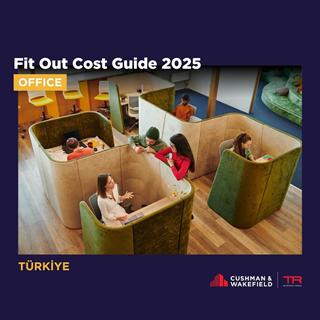
EUROPEAN LUXURY RETAIL REPORT 2024
Explore the dynamics of the European luxury retail real estate market.
At the forefront of retail real estate evolution
Europe stands as a forefront of luxury retail, offering an unparalleled shopping experience that caters to the world’s most discerning consumers. From the fashion capitals of Milan and Paris to the historic streets of London, Rome and beyond, luxury retail in Europe is characterised by a rich heritage coupled with a forward-looking approach that continues to captivate global audiences.
In this in-depth report, we delve into the dynamics of the European luxury retail real estate market, shedding light on key trends, market developments, and the strategic importance of physical stores in maintaining brand prestige and customer engagement.
The Strategic Role of Physical Stores in Luxury Retail
Physical stores remain at the heart of luxury retail strategies. These spaces are more than just points of sale; they are places for immersive brand experiences that convey a sense of exclusivity, craftsmanship, and the unique heritage of each brand. Key luxury streets across Europe, including Via Montenapoleone in Milan, Avenue des Champs-Élysées in Paris, Bond Street in London and Passeig de Gràcia in Barcelona, continue to thrive as epicenters of luxury shopping, attracting both international tourists and local clientele.
The allure of these destinations is underscored by the resilience they have shown in terms of demand and rental growth, even in the face of economic uncertainties. This vibrancy is a testament to the enduring appeal of luxury shopping as an engaging in-person experience, one that cannot be fully replicated online.
European Luxury Retail Real Estate at the Fore
The European luxury retail market embodies a blend of tradition and innovation, offering consumer experience that is unique. As the sector continues to evolve, the emphasis on in-store and in-person experiences will be key to captivating luxury consumers across all demographics and profiles. In this dynamic landscape, Europe's luxury retail streets and the brands that grace them stand as beacons of excellence, continuing to set the standards for the global luxury market.
Key Takeaways
Strong Demand but constrained supply in Prime Locations
- Demand for luxury retail spaces in key streets across Europe remains robust, with high levels of activity in 2023.
- Vacancy rates remain low in many streets, which is maintaining upward pressure on rental levels as retailers continue to focus on key streets.
Investment in Real Estate
- Luxury brands and conglomerates are increasingly investing in real estate not just for the operational retail spaces but as a long-term asset investment strategies.
- This includes purchasing buildings and investing in large-scale renovations to establish flagship stores and enhance brand presence.
Impact of Tourism on Retail Dynamics
- The resurgence of tourism, particularly from long-haul destinations, is influencing luxury retail sales and property demand.
- Cities favoured by tourists are seeing increased spending, which supports high rents and low vacancies in luxury retail sectors.
Shift Toward Experiential Retail
- There is a growing emphasis on creating more than just a shopping destination.
- Luxury retailers are expanding their offerings to include experiences that resonate with high-end consumers' lifestyles.
- This trend is driving the need for larger, more versatile retail spaces.
- Retail brands are also expanding into lifestyle areas including hotels, restaurants and cafes as well as positioning in key luxury resort towns which allows deeper and wider engagement with their consumers.
This report is prepared by Cushman & Wakefield. To access the original source, please visit "European Luxury Report 2024"




![System.String[]](https://cdnc.re-os.com/content/a9cb6d5e-bfb4-4fdf-bbd7-8cb54585f108.png)
![System.String[]](https://cdnc.re-os.com/content/a93aa81a-c6f6-4b94-80ef-e1d5fe70e0fc.jpeg)
![System.String[]](https://cdnc.re-os.com/content/49bf8d96-fe59-4096-8747-23105160a754.png)
![System.String[]](https://cdnc.re-os.com/content/009443c0-2d6f-42b9-a8b0-33cb3f39c984.png)
![System.String[]](https://cdnc.re-os.com/content/4f852c09-41ae-4c23-808a-a293f6ffe5d7.png)
![System.String[]](https://cdnc.re-os.com/content/a7b12f5b-2c71-4b76-90e2-92eb02711f67.png)